CuriosiD: What’s the story behind metro Detroit’s mile roads?
Road trip! In this episode, we answer your questions about Metro Detroit roads. We dig into the mile roads, John R and the city’s street layout.
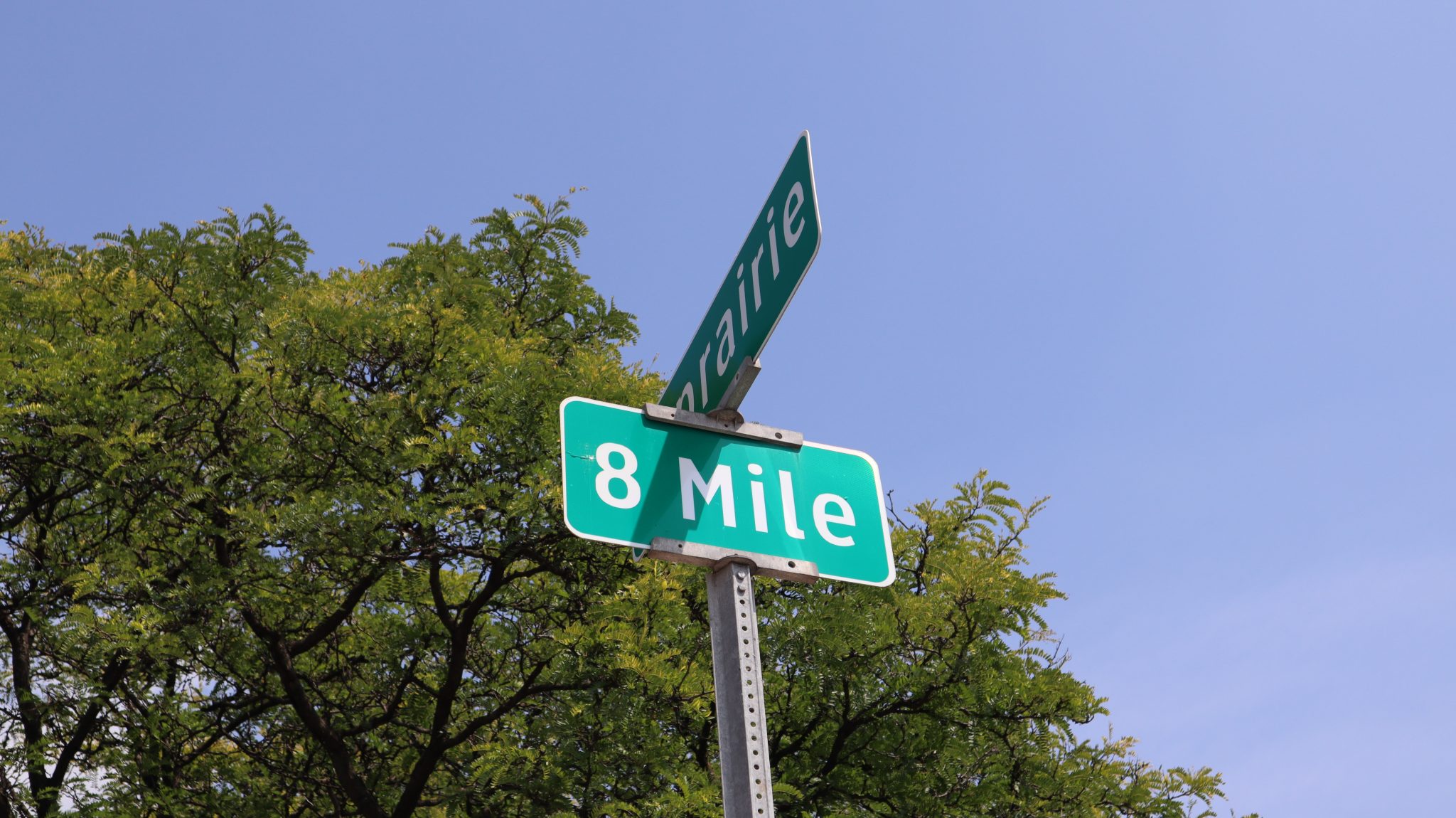
Eight Mile Road
WDET’s CuriosiD series answers your questions about everything Detroit. Subscribe to CuriosiD on Apple Podcasts, Spotify, NPR.org or wherever you get your podcasts.
Over the years, listeners have been curious about Metro Detroit’s mile roads. Some have asked if they’re really one mile apart. Others wonder why some are not called “mile” roads.
In this episode of CuriosiD, listener Angela Hoffman asks…
“I have some friends who work at Pewabic Pottery and heard the story that Mary Stratton lived on Three Mile Drive and walked to the studio, which was three miles from her house. So I’m kind of curious to see if that is where the name comes from.”
The short answer
The mile road system starts at Campus Martius in downtown Detroit and proceeds north from Michigan Ave. into northern Macomb County. It does not start at the Detroit River. Some of the roads were named for historic public figures. Three Mile Drive existed years before Pewabic co-founder Mary Stratton and her husband William built a house on that street. The name has roots in Detroit’s 19th Century horse racing scene.
Also in this episode:
Starting at the point of origin
Three Mile Drive runs northwest from Essex Street in Grosse Pointe Park to Harper Ave. in Detroit’s Morningside neighborhood. It is not part of the mile road system, which runs east to west.
Thirty-seven of these roads, spaced one mile apart, exist between downtown Detroit and the northern boundary of Macomb County. They follow a pattern laid out by land surveyors in 1815. Eight Mile Road runs along the Michigan Survey’s original baseline, which stretches west to Lake Michigan.
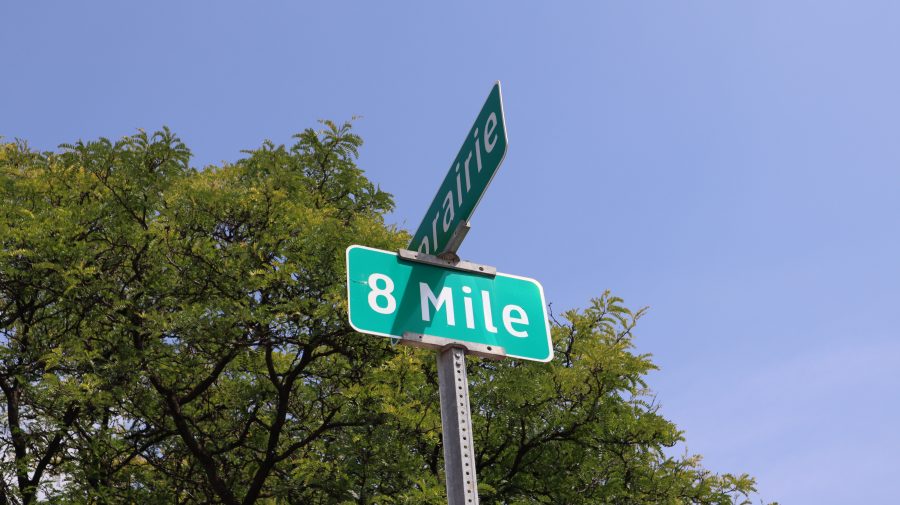
But if you drive eight miles south, where do you end up? The Detroit River? Joel Stone of the Detroit Historical Society says that’s a common — but erroneous — assumption.
“If you start at the river and drive up Woodward Avenue and get to Eight Mile Road, you’ve driven nine miles,” Stone says.
So how did Eight Mile get its name?
Stone says the measurement starts at a place in Campus Martius called the “point of origin.” This point — marked by a white stone — is encased underneath a glassy porthole in front of Parc Restaurant.
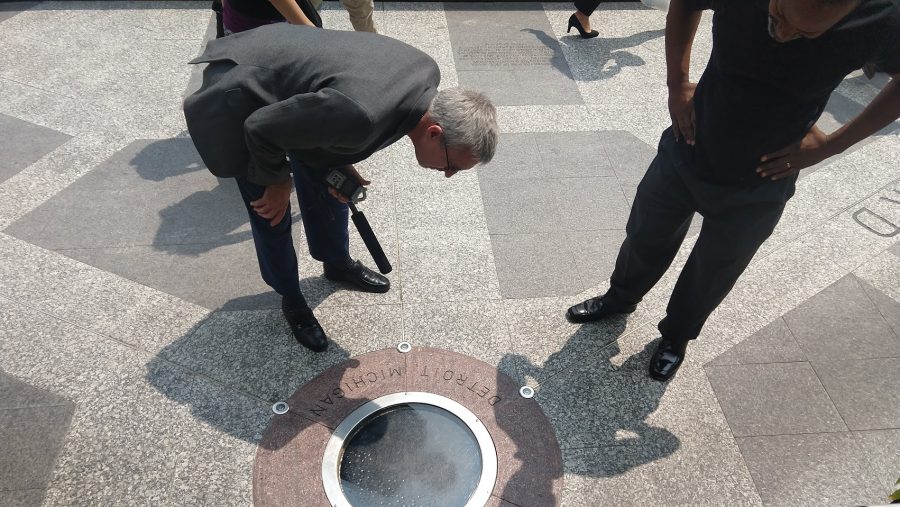
Detroit historian and journalist Ken Coleman says this is the point from which the city’s grid radiates outward.
“If you were to go eight miles from the point of origin, you’d be at Baseline Rd., which we now know as Eight Mile Rd.,” Coleman says. “And if you go west, you run right into Michigan Avenue, which goes out at an angle, and it would effectively be Zero Mile Rd.”
When is a mile road not a mile road?
Michigan Ave. runs west from the point of origin for a few miles until it reaches Lonyo St. in Detroit. From there, it turns toward the southwest. Draw a straight line from this point, and “Zero Mile” would become Ford Rd.
Proceeding north from Ford Rd. at one mile intervals takes you to Warren Ave., Joy Rd., Plymouth Rd. and Schoolcraft Rd. These would be One, Two, Three and Four Mile roads respectively.
So why aren’t they called that? It was common for local governments to name major streets after important people, places, or landmarks. Historian Ken Coleman explains that’s why Five Mile Rd. is called Fenkell in Detroit.
“George H. Fenkell was the longtime City of Detroit Public Works Commissioner,” Coleman says. “He was also the Water and Sewerage Dept. commissioner. He is credited with devising the strategy of cleaning streets by using pressurized water.”
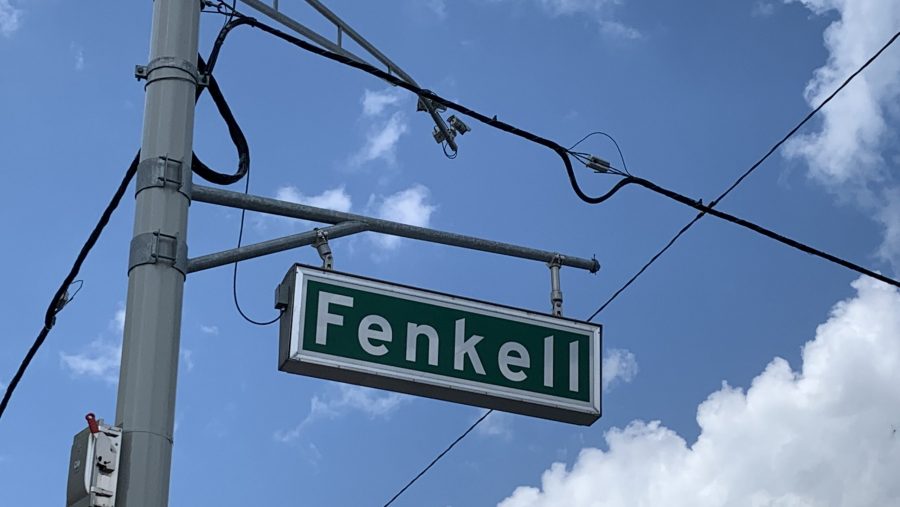
Coleman says Six Mile Rd. in Detroit is called McNichols after a former president of the University of Detroit.
“John McNichols went northwest from downtown Detroit and purchased this big plot of land,” Coleman says. That made it possible to move the campus from downtown to its present location near Six Mile Rd. and Livernois. Six Mile Rd. was renamed after McNichols’ death in 1932.
Three Mile Drive and the Pewabic connection
Plymouth Rd. runs all the way into Plymouth. Otherwise, it might be called Three Mile Rd. Which brings us back to Angela Hoffman’s original question about Three Mile Dr.
To fully answer Angela’s question, it helps to know a bit about Pewabic’s history.
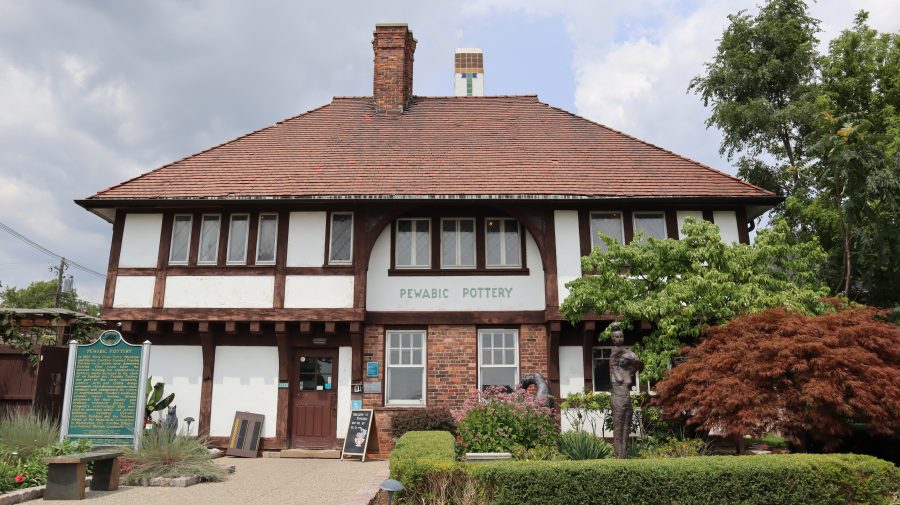
Mary Chase Perry and Horace Caulkins opened their first pottery studio in Detroit’s Brush Park neighborhood in 1903. A few years later, they moved the business to the corner of East Jefferson and Cadillac Blvd. This is where Perry’s future husband, architect William B. Stratton, built a new studio in 1907.
Cara Catallo is Pewabic Pottery’s communications coordinator. In 2017, she wrote a book entitled “Pewabic Pottery: A History Handcrafted in Detroit.” Although the Stratton house was about three miles from the pottery, Catallo says she found no evidence that Mary Stratton ever walked that far to work.
“We think pretty strongly that it was when she lived on Cadillac,” Catallo says.
The Strattons sold their home on Three Mile Dr. during the Great Depression. “They only lived in that house for about 10 years. So we think she walked to work (from Cadillac) because it was just around the corner from the pottery,” Catallo says.
The house on Three Mile Dr. is still there, but someone else lives there now. It is also on the National Register of Historic Places.

Off to the races
Three Mile Dr. predated the Stratton house by at least a dozen years. A 1915 Detroit Free Press article describes plans for luxury homes on Three Mile in what was then Grosse Pointe. The same article also mentions future plans to extend the road to a total length of — you guessed it — three miles.
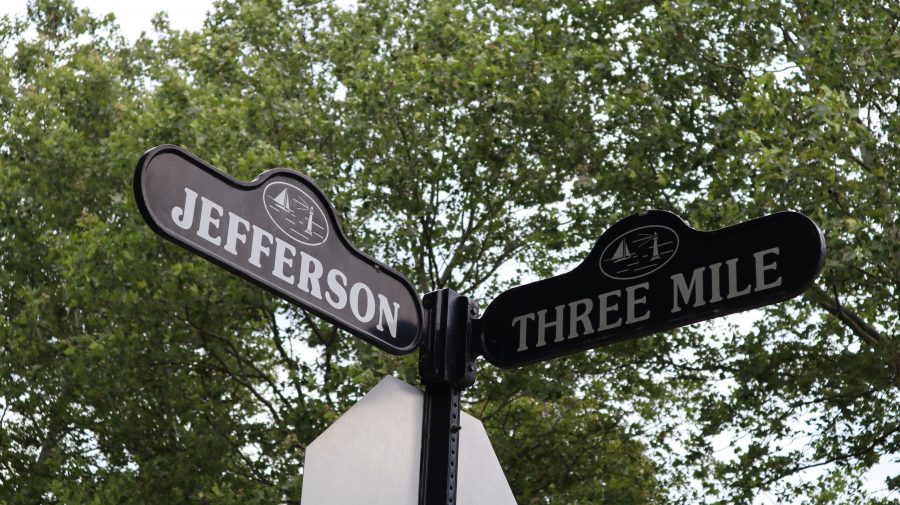
But there’s another explanation for the street name’s origin. It comes from Nick Sinacori, author of “Horse Power, Men & Machines.” His book explores the history of horse racing in Detroit during the 19th Century. During his research, Sinacori found a curious reference in William Gocher’s book “Trotalong.”
“This gentleman was the authority on horse racing,” Sinacori says. “And since that was part of the culture of the day, Detroit had three one-mile race tracks.”
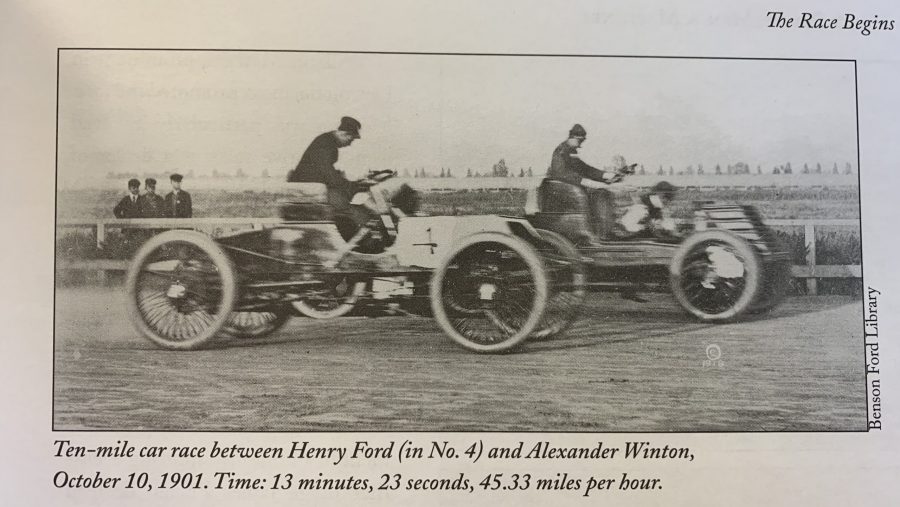
One of those tracks was the Detroit Driving Club near Jefferson and Algonquin St. This is where Henry Ford won his first and only professional automobile race in 1901 against a field that included Cleveland auto magnate Alexander Winton.
“Winton’s car broke down,” Sincacori says. “And it made it possible for Alexander Malcolmson to come forward with the seed money Henry Ford needed to incorporate the Ford Motor Company we know today in 1903.”
None of the one-mile tracks remain. An apartment complex, a few houses, and several vacant lots now occupy the land where the Detroit Driving Club stood.
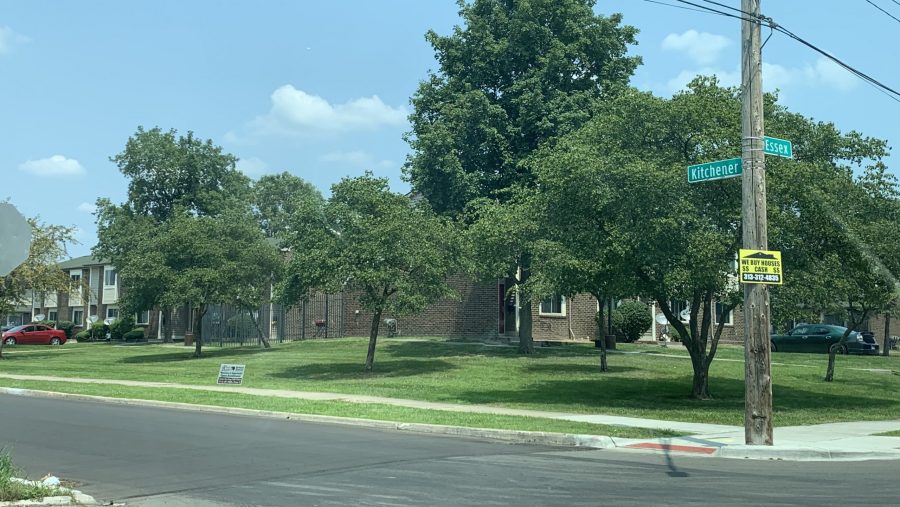
Now that she knows how Three Mile Dr. most likely got its name, listener Angela Hoffman says she’s sure everyone in her neighborhood will be excited to know it, too.
“It’s still fun to know it’s just a happy coincidence that Mary Stratton lived three miles from Pewabic.”
If you’re curious about something in Metro Detroit, WDET will go the extra mile to find the answer.
Editor’s note: This story was originally reported in August 2019 and has been updated for redistribution in 2023. To hear the original episode, use the audio player below.
About the listener
Angela Hoffman lives on Three Mile Drive and wanted to know how her street got its name. She moved to Grosse Pointe in the early 2010s and is interested in the history of her neighborhood. She belongs to a Facebook group that arranges block parties and other events.
We want to hear from you!
Have a general question about Detroit? Ask us here or fill out the form below.
More from CuriosiD:
Support the podcasts you love.
One-of-a-kind podcasts from WDET bring you engaging conversations, news you need to know and stories you love to hear.
Keep the conversations coming. Please make a gift today.

